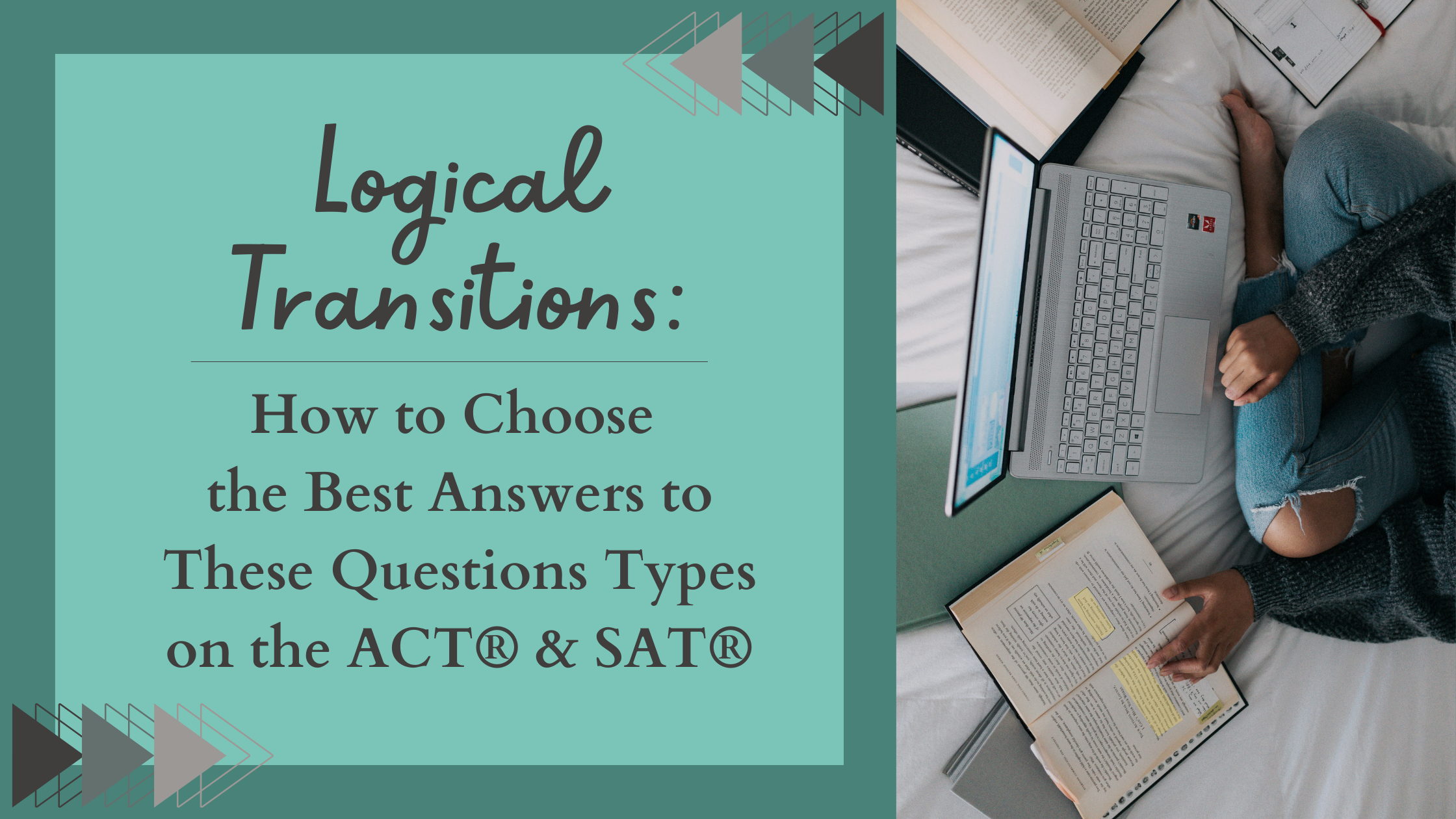Logical Transitions: How to Choose the Best Answers to These Questions Types on the ACT® & SAT®
Logical Transitions are part of the ACT® English and SAT® Writing sections. Logical transitions are a word, phrase, or sentence that smoothly and coherently join two elements of a text. Choosing the best logical transition requires students to have a firm grasp on rhetorical skills—the ability to present, justify, persuade, and/or support a particular point of view. Knowing which transition words or phrases to choose can be trickier than test takers may assume.
What Do Logical Transitions Ask?
When students encounter logical transition questions on the ACT® English and SAT® Writing sections, they will be asked to:
1. Create a transition between two parts of the same sentence.
For example:
a. My house is small. My yard, however, is big.
b. Her driving test was difficult; nevertheless, she earned her license.
2. Create a transition between two sentences.
For example:
a. We got a flat tire an hour into our road trip. Despite this, we made it just in time to join our hiking party at Glacier National Park.
b. My sister went into labor around 1:00pm. At the same time, I was at the hospital having an appendectomy.
3. Create a transition between two paragraphs.
For example:
a. An excerpt from A Roman Singer, by F. Marion Crawford:
For his friend, he said, was soon to make his appearance on the stage, and of course he could not be heard singing before that. And as the young lady insisted, Nino grew silent, and remarked that the lesson was not progressing. Thereupon Hedwig blushed—the first time he had ever seen her blush—and did not approach the subject again.
After that, he went to the house of the baroness, where he was evidently expected, for the servant asked his name and immediately ushered him into her presence.
Choosing the Most Logical Transition
The test taker must understand the author’s goal in the text: are they presenting, justifying, persuading, supporting a fact/opinion? Then the test taker must choose the best word, phrase, or sentence that connects and clarifies the relationship between the two elements.
Here are a few types of transition words and phrases students will encounter, and examples from each category:
Addition:
As well
Besides
In addition
Likewise
In other words
Moreover
What’s more
Similarly
That is
Furthermore
Indeed
For example
For instance
Cause & Effect:
Accordingly
As a result
Because
Consequently
Therefore
Thus
Hence
Since
For that reason
Argument:
Understandably
Of course
In fact
Obviously
Especially
Best of all
Worst of all
Most importantly
Contrast:
Despite
However
But
In contrast
On the contrary
Nevertheless
Nonetheless
On the other hand
Sequence:
Finally
First of all
First off
Immediately
Initially
Meanwhile
At the same time
Next
Following
Thereafter
Subsequently
Concurrently
How to Approach Logical Transition Questions
When approaching logical transition questions, test taker want to keep the following strategies in mind:
1. Read the sentence(s) carefully. Students need to first understand what the author is trying to accomplish with this transition; the context clues are in and/or around the sentence(s) in question.
2. Identify the relationship between the two elements of the sentence or passage in question.
3. Consider the types of transitions that would make the most sense based on the relationship: addition, cause & effect, argument, contrast, sequence.
4. Notice the style and tone of the text. In some cases, the answer choices can be eliminated based solely on the fact that they simply don't match the author’s established style or tone.
5. Pay attention to the main idea, purpose, and development of the text. The correct answer will be in agreement with these components.
6. Not sure? Plug in each of the transitional words or phrases and eliminate the ones that are least likely to be the answer.
7. The best answer choice:
Connects and clarifies the relationship between the two elements in question
Supports the information in the sentence or passage
Understanding how to approach logical transition questions will, without a doubt, help students improve their performance on the ACT® English and the SAT® Writing sections. Just as we’ve mentioned the importance of practicing other question types— like main idea, author’s voice & method, and tone & attitude—practice is the key. Make sure that your clients are getting sufficient practice with these types of rhetorical skill questions both with sentences and short texts as well as longer passages, too.
Think your test-prep materials could use a pick-me-up? Clear Choice Prep offers 100% white-label, custom-branded comprehensive ACT®- & SAT®- aligned practice materials, software, workbooks, and more. Interested? Schedule a free demo today!

